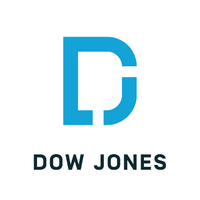The Economic Tug-of-War: Trump, Biden, and the GDP Rollercoaster
May 2, 2025, 11:57 pm
The U.S. economy is on a rollercoaster ride, and the drivers are none other than Donald Trump and Joe Biden. The latest reports reveal a troubling trend: the gross domestic product (GDP) contracted in the first quarter of 2025. This marks a significant downturn, the first negative growth since 2022. As the economy dips, so do the political stakes. Trump, ever the showman, has taken to the stage, pointing fingers at Biden. He claims the economic woes are a direct result of Biden's policies. But is that the whole story?
The GDP fell at an annualized rate of 0.3% in the first quarter. Trump wasted no time in blaming Biden. He painted a picture of an economy in freefall, a narrative he seems eager to continue into the second quarter. “This is Biden,” he declared, suggesting that the economic decline is a lingering shadow of the previous administration. But is it fair to lay the blame solely at Biden's feet?
Trump's assertions come amid a backdrop of complex economic realities. The Commerce Department's report reveals that the GDP decline was influenced by a surge in imports. Companies rushed to stockpile goods ahead of Trump's promised tariffs. This preemptive move created a temporary spike in imports, which ultimately weighed down the GDP. In other words, businesses were trying to outsmart the future, but it backfired.
The economic landscape is further complicated by a drop in government spending, particularly in defense. This reduction is a double-edged sword. While it may reflect a shift in priorities, it also contributes to the overall economic contraction. Trump's narrative of blaming Biden overlooks these nuances. It’s like blaming the rain for a flooded street while ignoring the clogged drains.
The labor market is also feeling the pinch. Private payroll growth slowed dramatically in April, adding just 62,000 jobs. This figure is the smallest gain since July 2024 and falls well short of expectations. Economists had anticipated an increase of 120,000. The leisure and hospitality sectors managed to add jobs, but other areas lagged behind. The uncertainty surrounding Trump's tariff policies has left employers hesitant. They are caught in a web of indecision, unsure of how to navigate the stormy economic seas.
Wage growth is another area of concern. For those staying in their jobs, wage gains dipped to 4.5%, down from 4.6% in March. Job changers saw a slight uptick, but overall, the trend is troubling. Employers are cautious, and this caution is reflected in hiring practices. The economy is like a ship caught in a tempest, with employers unsure of which way to steer.
Trump's attempts to distance himself from the economic downturn are reminiscent of his earlier claims of credit during Biden's presidency. When the stock market soared, Trump was quick to take a victory lap. Now, as the market stumbles, he seeks to shift the narrative. This back-and-forth is a classic political maneuver, but it does little to address the underlying issues.
The economic data paints a picture of uncertainty. Consumer confidence is wavering, and businesses are bracing for impact. The fear surrounding Trump's tariffs looms large. Employers are hesitant to commit to hiring when the future is shrouded in doubt. It’s a game of chess, but the pieces are scattered, and the board is chaotic.
As Trump prepares to meet with business leaders, the weight of the economic data hangs heavy. His narrative of a booming economy is at odds with the reality of shrinking payrolls and rising inflation. The personal consumption expenditures price index rose sharply, indicating that inflation is still a concern. Prices are climbing, and consumers are feeling the pinch.
The tug-of-war between Trump and Biden is more than just a political spectacle; it’s a reflection of the economic reality facing the nation. Each side is quick to claim victory or shift blame, but the truth is often more complex. The economy is not a simple equation; it’s a living, breathing entity influenced by myriad factors.
In the coming months, the economic landscape will continue to evolve. The second quarter will reveal whether Trump’s predictions of a turnaround hold any weight. Will the economy rebound, or will it continue to struggle under the weight of uncertainty? The stakes are high, and the outcome remains to be seen.
As the political theater unfolds, one thing is clear: the American public is watching. They are the ones who feel the impact of these economic shifts. The blame game may play well on social media, but it does little to alleviate the real-world consequences of economic policy.
In the end, the economy is like a ship navigating through stormy waters. It requires steady hands at the helm and a clear vision for the future. Whether Trump or Biden can provide that clarity remains to be seen. For now, the economic rollercoaster continues, and the ride is anything but smooth.
The GDP fell at an annualized rate of 0.3% in the first quarter. Trump wasted no time in blaming Biden. He painted a picture of an economy in freefall, a narrative he seems eager to continue into the second quarter. “This is Biden,” he declared, suggesting that the economic decline is a lingering shadow of the previous administration. But is it fair to lay the blame solely at Biden's feet?
Trump's assertions come amid a backdrop of complex economic realities. The Commerce Department's report reveals that the GDP decline was influenced by a surge in imports. Companies rushed to stockpile goods ahead of Trump's promised tariffs. This preemptive move created a temporary spike in imports, which ultimately weighed down the GDP. In other words, businesses were trying to outsmart the future, but it backfired.
The economic landscape is further complicated by a drop in government spending, particularly in defense. This reduction is a double-edged sword. While it may reflect a shift in priorities, it also contributes to the overall economic contraction. Trump's narrative of blaming Biden overlooks these nuances. It’s like blaming the rain for a flooded street while ignoring the clogged drains.
The labor market is also feeling the pinch. Private payroll growth slowed dramatically in April, adding just 62,000 jobs. This figure is the smallest gain since July 2024 and falls well short of expectations. Economists had anticipated an increase of 120,000. The leisure and hospitality sectors managed to add jobs, but other areas lagged behind. The uncertainty surrounding Trump's tariff policies has left employers hesitant. They are caught in a web of indecision, unsure of how to navigate the stormy economic seas.
Wage growth is another area of concern. For those staying in their jobs, wage gains dipped to 4.5%, down from 4.6% in March. Job changers saw a slight uptick, but overall, the trend is troubling. Employers are cautious, and this caution is reflected in hiring practices. The economy is like a ship caught in a tempest, with employers unsure of which way to steer.
Trump's attempts to distance himself from the economic downturn are reminiscent of his earlier claims of credit during Biden's presidency. When the stock market soared, Trump was quick to take a victory lap. Now, as the market stumbles, he seeks to shift the narrative. This back-and-forth is a classic political maneuver, but it does little to address the underlying issues.
The economic data paints a picture of uncertainty. Consumer confidence is wavering, and businesses are bracing for impact. The fear surrounding Trump's tariffs looms large. Employers are hesitant to commit to hiring when the future is shrouded in doubt. It’s a game of chess, but the pieces are scattered, and the board is chaotic.
As Trump prepares to meet with business leaders, the weight of the economic data hangs heavy. His narrative of a booming economy is at odds with the reality of shrinking payrolls and rising inflation. The personal consumption expenditures price index rose sharply, indicating that inflation is still a concern. Prices are climbing, and consumers are feeling the pinch.
The tug-of-war between Trump and Biden is more than just a political spectacle; it’s a reflection of the economic reality facing the nation. Each side is quick to claim victory or shift blame, but the truth is often more complex. The economy is not a simple equation; it’s a living, breathing entity influenced by myriad factors.
In the coming months, the economic landscape will continue to evolve. The second quarter will reveal whether Trump’s predictions of a turnaround hold any weight. Will the economy rebound, or will it continue to struggle under the weight of uncertainty? The stakes are high, and the outcome remains to be seen.
As the political theater unfolds, one thing is clear: the American public is watching. They are the ones who feel the impact of these economic shifts. The blame game may play well on social media, but it does little to alleviate the real-world consequences of economic policy.
In the end, the economy is like a ship navigating through stormy waters. It requires steady hands at the helm and a clear vision for the future. Whether Trump or Biden can provide that clarity remains to be seen. For now, the economic rollercoaster continues, and the ride is anything but smooth.

